
Marselisborg Palace is a royal residence of the Danish royal family in Aarhus. It has been the summer residence of Queen Margrethe II since 1967.
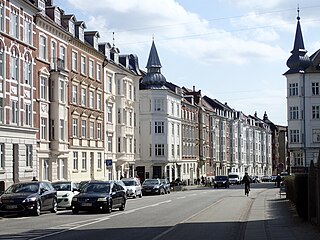
Frederiksbjerg is a borough in Aarhus, Denmark.

Gabriel Marselis was a Danish tradesman and land owner. He was born in Hamburg, the son of the immigrated Dutch merchant Gabriel Marselis Sr., and was a brother of Selius Marselis. He settled in Amsterdam in 1634 and married the year after. The couple had three sons. In 1655 he remarried.

Marselisborg Forests, or simply Marselisborg Forest, is a 550 hectares forest to the south of Aarhus City in the Kingdom of Denmark. Many present day sources now includes the forest of Fløjstrup, as part of the Marselisborg Forests, upping the total area with another 200 hectares. Marselisborg Forests runs along the coastline of the Aarhus Bay in a hilly terrain with steep slopes and deep gullies, especially at the shoreline. There are many traces of prehistoric activities here and the landscape have been covered by woodlands for thousands of years.
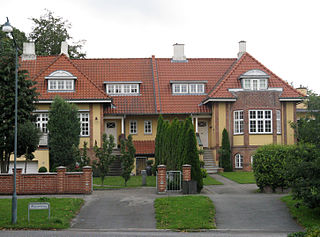
Marselisborg is a small borough of Aarhus, Denmark. Being small and situated just south of Frederiksbjerg, Marselisborg is often considered part of Frederiksbjerg.

Constantin Marselis, or Constantijn Marselis, was a nobleman of the wealthy Dutch Marselis family.

Lyngbygård is a manor house and a listed building in Aarhus Municipality, Denmark. The estate is 225 hectares of land situated by Lyngbygård River, 4 km. west of Tilst in Aarhus. The manor building was listed by the Danish Heritage Agency on 9 July 1918.
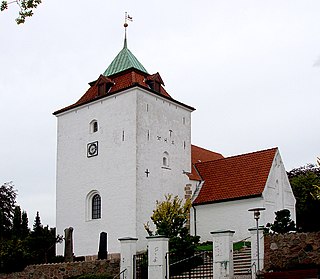
Viby Church is a church located in Viby Parish in Aarhus, Denmark. The church is situated in the neighbourhood Viby, west of Marselisborg. It is a parish church which belongs to the Church of Denmark and there's population of 8.211 within the parish borders (2015).

St. Lukas Church is a church in Aarhus, Denmark. The church is situated in the Frederiksbjerg neighbourhood on Skt. Lucas Kirkeplads by Ingerslevs Boulevard. St. Lukas Church is a parish church under the Church of Denmark, the Danish state church, under the Diocese of Aarhus. It is the parish church of St. Lukas Parish which has some 11.000 parish members. The church was designed by architects Anton Frederiksen and Kaj Gottlob in neoclassical style with a 35 meters tall tower. It was constructed between 1921 and 1926 but the crypt under the church, with room for 200 graves, was opened before the church itself, in 1923.
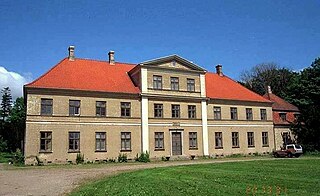
Vilhelmsborg is the National Equestrian Centre of Denmark and a listed building in Aarhus Municipality. The main manor building was completed in 1842 and was listed by the Danish Heritage Agency on 3 March 1945. The manor lies 10 km. south of Aarhus, by Beder-Malling in Mårslet Parish, and is today owned by Aarhus Municipality along with 288 hectares of adjoining land.

Moesgård is a former manor house and a listed building in Aarhus Municipality. The current buildings were completed in 1778 and was listed in the Danish registry of protected buildings and places by the Danish Heritage Agency on 17 July 1918.

Moesgård Forest Mill is a mill and a listed building in Aarhus, Denmark. The mill was built in 1785 and was listed on the Danish registry of protected buildings and places by the Danish Heritage Agency on 13 April 1984. The mill is situated in the Marselisborg Forests just south of the suburb Skåde and Moesgård Museum, some 6 km. south of Aarhus city center.

Tranbjerg Church is a church in Aarhus, Denmark, situated in the suburb Tranbjerg, 9 kilometers south-west of Aarhus city center, on the old country road between Aarhus and Horsens. Tranbjerg Church is from the 1100s, erected as a typical Danish Romanesque village church. Later additions in the 15th century added a Gothic tower and porch. Tranbjerg Church is the only church in Tranbjerg pastorate and Parish, with 7.414 members of the Church of Denmark living in Tranbjerg Parish on 1 January 2016. Tranbjerg Church is devoted to St. Ursula and the 11,000 virgin handmaidens.

Skansepalæet is a residential building in Aarhus, Denmark situated in the Frederiksbjerg neighborhood. The building comprises Standvejen 34-36 and Heibergsgade 25-27. Skansepalæet was built in 1908 by designs of the Danish architect Hjalmar Kjær as a hotel in connection with the Danish National Exhibition of 1909. Today the building is an apartment complex owned by its residents.

The architecture of Aarhus comprises numerous architectural styles and works from the Middle Ages to present-day. Aarhus has a well-preserved medieval city center with the oldest dwellings dating back to the mid-1500s and some ecclesiastical structures such as St. Clemen's Cathedral and numerous smaller churches that can be traced back to the 1100s. The industrialization of the 19th and 20th centuries left distinctive industrial structures, important National romantic works and some of the best examples of Functionalist architecture in the country. The history of the city as a Viking fort is evidenced in the street layout of the Latin Quarter, the wider Indre By neighborhood testifies to its later role as a Market town and center of commerce while the Frederiksbjerg, Trøjborg and Marselisborg districts showcase the first cohesive urban planning efforts of the early 20th century.

Constantinsborg is a manor in Aarhus Municipality, Denmark which has existed since at least 1400. It is situated on the southern shore of Årslev Engsø, a newly created nature reserve and shallow lake extension of Brabrand Lake, in Viby J 10 km. south-west of Aarhus. The manor and estate are privately owned today and ran as a farm. Constantinsborg was originally known as Stadsgaard but was later renamed after Constantin Marselis who owned the estate in the 1600s. In the 1800s the Pontoppidan family owned the estate and came to have a large impact on Danish agriculture and the transformation of the Jutland moors into agricultural land. The current main manor building was constructed in the early 1800s while adjoining farm buildings date back to 1870 and the 20th century.

Hans Peter Ingerslev was a Danish politician and minister. He was born in 1831 on Marselisborg Manor in Aarhus, owned by his parents Caspar Peder Rothe Ingerslev and Marie Meulengracht.
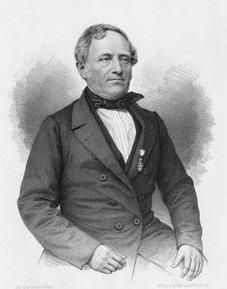
Caspar Peder Rothe Ingerslev was a Danish politician, procurator and landowner. He served at different times in the Folketing, Landstinget, Danish supreme court and on the advisory council to the king. He married into the wealthy Meulengracht family and fathered the future minister Hans Peter Ingerslev. Ingerslev was also active in local politics and managed the Marselisborg Manor for many years.

Frederik Danneskjold-Samsøe was a Danish politician, minister, admiral, chief of the Danish marine and count of the Barony Marselisborg. In his time Danneskjold-Samsøe held numerous public offices and was awarded the Order of the Dannebrog, Order of the Elephant and the Ordre de l'Union Parfaite and was made Chamberlain. In 1767 he was ousted from his positions and spent the rest of his life focused on philanthropy and socializing, in part with Christian Jacobsen Drakenberg.
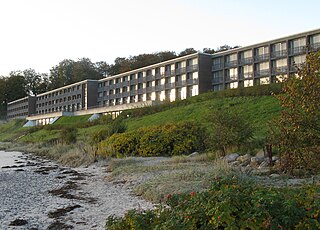
Hotel Marselis or Marselis Hotel - Aarhus is a hotel in Aarhus, Denmark. It is located in the Marselisborg Forests, in the Højbjerg district. It overlooks the Bay of Aarhus from a prominent position on the coast. The hotel is owned by the company Helnan Hotels which also operates a hotel in Aalborg. The hotel includes 163 rooms and beyond common amenities also feature conference and meeting rooms. Marselis Hotel is a four star hotel (2016) and is member of the Danish hotel organization Horesta.






















